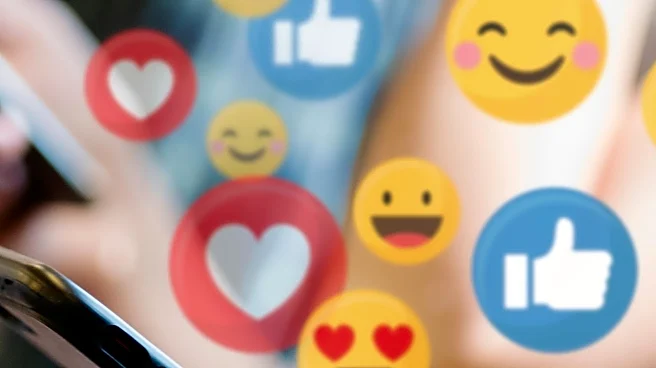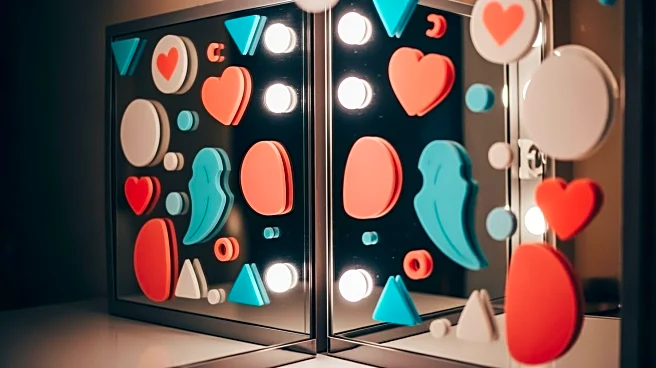What's Happening?
The practice of posting crying selfies on social media platforms has sparked debate among users, with opinions divided on whether it represents genuine vulnerability or attention-seeking behavior. Some
individuals, including celebrities like Bella Hadid, have shared images of themselves crying, often accompanied by personal stories or artistic presentations. These posts can be seen as a form of self-expression, documenting emotional experiences such as breakups, miscarriages, or career struggles. While some users criticize the trend as 'cringe' or inauthentic, others argue that it provides a sense of community and validation, especially for marginalized groups. The discussion highlights the evolving nature of online self-representation and the balance between authenticity and perceived attention-seeking.
Why It's Important?
The trend of posting crying selfies touches on broader themes of mental health, societal norms, and the role of social media in personal expression. For many, these posts offer a way to connect with others who may share similar experiences, fostering a sense of community and support. However, the criticism of such posts reflects ongoing concerns about the authenticity of online personas and the potential for social media to amplify superficial or performative behaviors. This debate is significant as it underscores the tension between the desire for genuine connection and the pressures of maintaining a curated online image. It also raises questions about the impact of social media on mental health and the ways individuals navigate public vulnerability.
What's Next?
As social media continues to evolve, users may increasingly seek platforms or communities that prioritize authenticity and meaningful interactions. This could lead to changes in how individuals choose to share personal experiences online, potentially shifting towards more private or selective sharing. Additionally, social media companies might explore features that encourage genuine engagement and support, addressing concerns about performative behavior. The ongoing dialogue around crying selfies may also influence broader discussions on mental health awareness and the importance of validating diverse emotional experiences in digital spaces.
Beyond the Headlines
The phenomenon of crying selfies highlights cultural shifts in how emotions are publicly expressed and perceived. It challenges traditional notions of privacy and vulnerability, suggesting that public displays of emotion can be both empowering and controversial. This trend may contribute to changing attitudes towards emotional openness, particularly among younger generations who are more accustomed to sharing personal experiences online. It also raises ethical considerations about the commodification of personal struggles and the potential for exploitation in digital environments.











